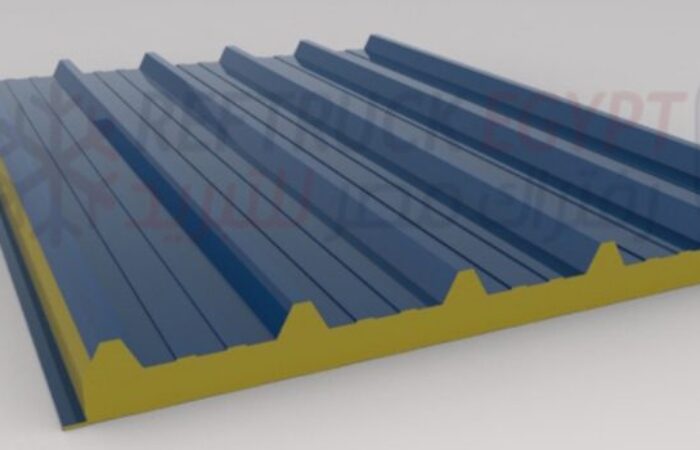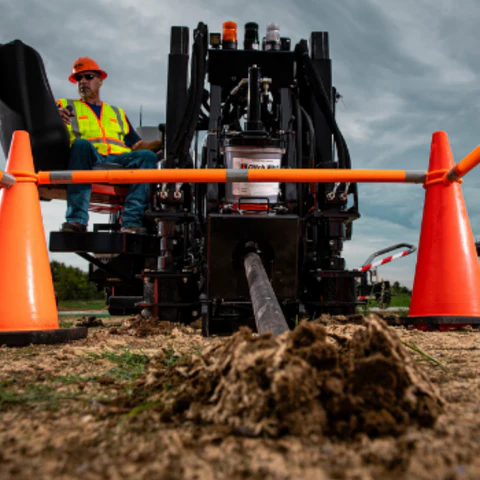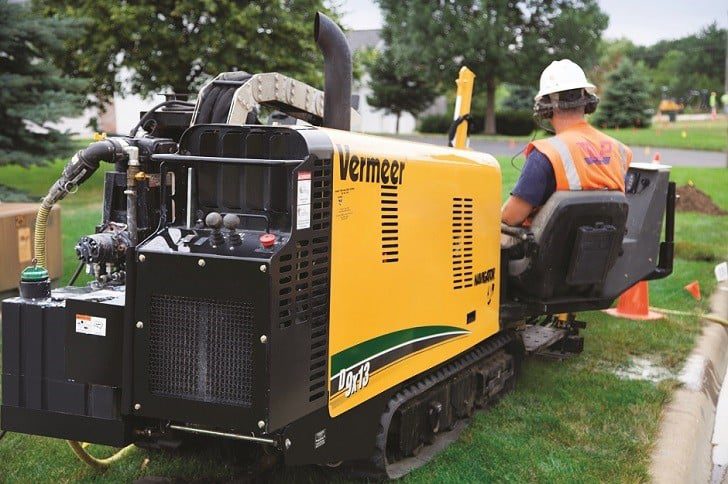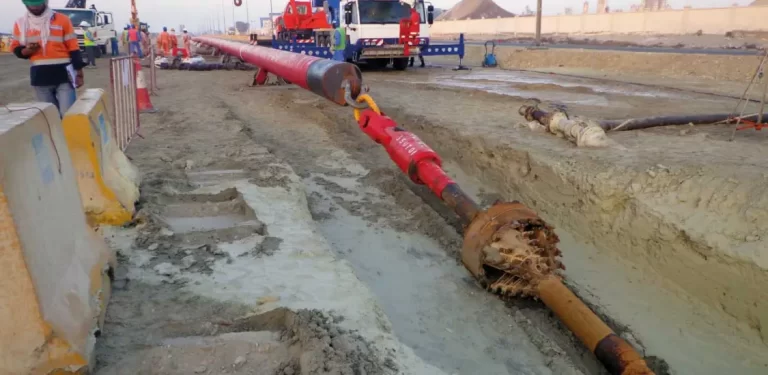Sandwich Panels and Cold Rooms: Design, Manufacturing, and Applications
Book Chapters:
Introduction to Sandwich Panels and Cold Rooms
Materials Used in Sandwich Panel Construction
Structural Analysis and Design of Sandwich Panels
Manufacturing Processes for Sandwich Panels
Joining Techniques for Sandwich Panels
Insulation Materials for Cold Rooms
Design Considerations for Cold Rooms
Refrigeration Systems for Cold Rooms
Installation and Maintenance of Cold Rooms
Applications of Sandwich Panels and Cold Rooms in Construction
Applications of Sandwich Panels and Cold Rooms in Food Storage
Applications of Sandwich Panels and Cold Rooms in Pharmaceutical Storage
Applications of Sandwich Panels and Cold Rooms in Data Centers
Environmental Considerations in the Use of Sandwich Panels and Cold Rooms
Future Developments in Sandwich Panel and Cold Room Technology
Introduction:
Sandwich panels and cold rooms are critical components in many industries, including construction, food storage, pharmaceuticals, and data centers. They are used to provide insulation and temperature control, which is essential for the proper storage of temperature-sensitive products.
The design, manufacturing, and installation of sandwich panels and cold rooms are complex processes that require a deep understanding of the materials, structural analysis, and insulation technologies involved. This book provides a comprehensive overview of the design, manufacturing, and application of sandwich panels and cold rooms, with a focus on the latest developments and technologies in the field.
The book begins with an introduction to sandwich panels and cold rooms, outlining their importance in various industries and providing an overview of the book’s contents. It then covers the materials used in sandwich panel construction, including metal, composite, and foam cores.
The structural analysis and design of sandwich panels are discussed in detail, including the various design considerations and testing methods used to ensure structural integrity. The manufacturing processes for sandwich panels, such as roll forming and extrusion, are explored, along with the joining techniques used to connect panels together.
The book then turns its attention to the design considerations and refrigeration systems used in cold rooms. The insulation materials used to maintain the required temperature ranges are discussed, along with the installation and maintenance of cold rooms.
Applications of sandwich panels and cold rooms in various industries, such as construction, food storage, and pharmaceutical storage, are explored. Finally, the book considers the environmental impact of sandwich panels and cold rooms, along with future developments in technology.
Introduction to Sandwich Panels and Cold Rooms
Sandwich panels and cold rooms are essential components in many industries, providing insulation and temperature control that are vital for the proper storage of temperature-sensitive products. A sandwich panel is a composite panel consisting of two outer sheets (skins) and a core material, which is bonded to the skins to provide structural integrity. The core material is typically made of foam, honeycomb, or other lightweight materials. Sandwich panels are used in a wide range of applications, including building construction, transportation, and industrial storage.
A cold room is a room that is designed to maintain a low temperature range, typically between 2°C to 8°C, depending on the specific application. Cold rooms are used in various industries, such as food storage, pharmaceutical storage, and data centers, to store temperature-sensitive products.
The use of sandwich panels and cold rooms is critical in ensuring that the required temperature ranges are maintained. Failure to maintain the correct temperature can result in spoilage, degradation, or even loss of the stored product.
In this book, we will explore the design, manufacturing, and applications of sandwich panels and cold rooms in detail, with a focus on the latest developments and technologies in the field. The book aims to provide a comprehensive overview of the design and construction of sandwich panels and cold rooms, along with
Introduction to Sandwich Panels and Cold Rooms (Continued)
The book is divided into 15 chapters, with each chapter covering a specific aspect of sandwich panels and cold rooms. In Chapter 2, we will explore the materials used in sandwich panel construction, including metal, composite, and foam cores. We will also discuss the properties of these materials and their suitability for various applications.
Chapter 3 will cover the structural analysis and design of sandwich panels, including the various design considerations and testing methods used to ensure structural integrity. We will also discuss the different types of loads that sandwich panels can be subjected to, such as wind and snow loads, and how they can be analyzed.
In Chapter 4, we will explore the various manufacturing processes for sandwich panels, such as roll forming, extrusion, and injection molding. We will also discuss the advantages and disadvantages of each method and how they can be used to produce different types of sandwich panels.
Chapter 5 will cover the joining techniques used to connect sandwich panels together, such as adhesives, mechanical fasteners, and welding. We will also discuss the advantages and disadvantages of each method and their suitability for different applications.
In Chapter 6, we will explore the different types of insulation materials used in cold rooms, such as polyurethane foam, polystyrene foam, and mineral wool. We will discuss the properties of these materials and their suitability for various temperature ranges.
Chapter 7 will cover the design considerations for cold rooms, including the various factors that need to be considered when designing a cold room, such as temperature range, humidity, and air circulation. We will also discuss the different types of cold rooms, such as walk-in cold rooms and reach-in cold rooms.
In Chapter 8, we will explore the different types of refrigeration systems used in cold rooms, such as vapor compression, absorption, and adsorption systems. We will also discuss the advantages and disadvantages of each system and their suitability for different applications.
Chapter 9 will cover the installation and maintenance of cold rooms, including the different types of insulation and refrigeration systems and how they can be installed and maintained. We will also discuss the different types of controls and monitoring systems used in cold rooms.
In Chapter 10, we will explore the various applications of sandwich panels and cold rooms in construction, including their use in roofing, wall cladding, and flooring. We will also discuss the advantages and disadvantages of using sandwich panels in construction.
Chapter 11 will cover the applications of sandwich panels and cold rooms in food storage, including their use in refrigerators, freezers, and cold storage warehouses. We will also discuss the different types of food products that can be stored in cold rooms.
In Chapter 12, we will explore the applications of sandwich panels and cold rooms in pharmaceutical storage, including their use in drug manufacturing and storage facilities. We will also discuss the different types of pharmaceutical products that can be stored in cold rooms.
Chapter 13 will cover the applications of sandwich panels and cold rooms in data centers, including their use in server rooms and data storage facilities. We will also discuss the different types of data storage devices that can be stored in cold rooms.
In Chapter 14, we will discuss the environmental considerations in the use of sandwich panels and cold rooms, including their impact on the environment and the measures that can be taken to minimize this impact.
Finally, in Chapter 15, we will explore the future developments in sandwich panel and cold room technology, including new materials, manufacturing processes, and applications.
Overall, this book aims to provide a comprehensive overview of sandwich panels and cold rooms, covering their design, manufacturing, and applications in various industries. We hope that this book will be a valuable resource for engineers, architects, and designers who are involved in the design and construction of
Materials Used in Sandwich Panel Construction
In Chapter 2, we will explore the different materials used in sandwich panel construction, including metal, composite, and foam cores. Sandwich panels are typically composed of two outer layers, known as facings, and a core material sandwiched between them. The core material is what gives the panel its strength and insulation properties.
Metal facings are commonly used in sandwich panel construction due to their high strength and durability. Common metals used in sandwich panels include aluminum, steel, and stainless steel. The metal facings can be corrugated or smooth, depending on the intended use of the panel.
Composite facings are also used in sandwich panels, which are composed of two or more materials combined to form a stronger and more durable material. Composite materials are typically lightweight and have excellent strength-to-weight ratios, making them ideal for use in sandwich panels.
The core material used in sandwich panels can be made of various materials, including foam, honeycomb, and balsa wood. Foam cores are the most common and are typically made of polyurethane, polystyrene, or polyisocyanurate foam. Foam cores provide excellent insulation properties and are lightweight, making them ideal for use in sandwich panels used in construction.
Honeycomb cores are made up of hexagonal cells that are glued together to form a strong and lightweight core. Honeycomb cores are typically made of aluminum or aramid fibers and are commonly used in aerospace and marine applications.
Balsa wood cores are also used in sandwich panels, especially in high-end applications such as yacht and aircraft construction. Balsa wood is lightweight and has excellent strength-to-weight ratios, making it ideal for use in sandwich panels.
In this chapter, we will also discuss the properties of each material and their suitability for various applications. We will also explore the different manufacturing processes used to produce sandwich panels using these materials, such as roll forming, extrusion, and injection molding.
Overall, this chapter will provide a comprehensive overview of the materials used in sandwich panel construction, including their properties and manufacturing processes. Understanding the properties of each material and their suitability for different applications is essential for designing and constructing effective and efficient sandwich panels.
Types of Sandwich Panel Applications
In Chapter 3, we will discuss the different types of applications where sandwich panels are commonly used. Sandwich panels have a wide range of uses and are employed in various industries, including construction, transportation, and aerospace.
In the construction industry, sandwich panels are commonly used for roofing, wall cladding, and insulation. Sandwich panels used in construction are typically composed of metal facings and foam cores. These panels provide excellent thermal insulation and can be used to construct energy-efficient buildings.
Transportation is another industry where sandwich panels are widely used. In the automotive industry, sandwich panels are used for car roofs, doors, and floors. These panels provide lightweight and durable solutions for automobile manufacturing.
In the marine industry, sandwich panels are used for boat hulls, decks, and interiors. Balsa wood cores are commonly used in sandwich panels for yacht construction due to their lightweight and high strength-to-weight ratio.
Aerospace is another industry where sandwich panels are widely used. Sandwich panels are used in the construction of aircraft wings, fuselages, and interior panels. Honeycomb cores are commonly used in sandwich panels for aerospace applications due to their lightweight and high strength-to-weight ratio.
In this chapter, we will also explore the benefits of using sandwich panels in various applications. Sandwich panels offer several advantages over traditional construction materials, including lightweight, high strength, excellent thermal insulation properties, and design flexibility.
Overall, this chapter will provide a comprehensive overview of the various applications where sandwich panels are commonly used. Understanding the different types of applications and their specific requirements is essential for designing and constructing effective sandwich panels.
Design Considerations for Sandwich Panel Construction
In Chapter 4, we will explore the design considerations for sandwich panel construction. Designing effective and efficient sandwich panels requires careful consideration of several factors, including material selection, structural performance, and environmental factors.
Material selection is a critical factor in sandwich panel design. The choice of facings and core material will depend on the intended use of the panel and the specific requirements of the application. The properties of each material, including strength, durability, and thermal insulation properties, must be carefully evaluated to ensure optimal performance.
Structural performance is another important consideration in sandwich panel design. The panel must be designed to withstand the loads and stresses that it will be subjected to in its intended use. The thickness and strength of the facings and core material must be carefully selected to ensure optimal structural performance.
Environmental factors must also be considered in sandwich panel design. The panel must be designed to withstand exposure to the elements, such as temperature changes, humidity, and UV radiation. The panel must also be designed to meet applicable safety and environmental regulations.
In this chapter, we will also explore the different types of sandwich panel configurations, including flat panels, curved panels, and panels with varying thicknesses. We will also discuss the different types of joints used in sandwich panel construction, including adhesive bonding, mechanical fasteners, and welding.
Overall, this chapter will provide a comprehensive overview of the design considerations for sandwich panel construction. Understanding the factors that influence sandwich panel design is essential for designing and constructing effective and efficient sandwich panels that meet the specific requirements of their intended use.
Manufacturing Processes for Sandwich Panels
In Chapter 5, we will explore the manufacturing processes used to produce sandwich panels. There are several different manufacturing processes used in the production of sandwich panels, each with its own advantages and limitations.
One of the most common manufacturing processes used for sandwich panels is the continuous lamination process. In this process, the facings and core material are continuously fed through a laminating machine, which applies adhesive and compresses the layers together. The continuous lamination process is suitable for high-volume production and can produce panels of varying thicknesses.
Another common manufacturing process used for sandwich panels is the discontinuous lamination process. In this process, the facings and core material are laminated together in individual panels. The panels are then assembled into the final sandwich panel using mechanical fasteners or adhesive bonding. The discontinuous lamination process is suitable for low-volume production and can produce panels of varying shapes and sizes.
A third manufacturing process used for sandwich panels is the vacuum infusion process. In this process, the core material is placed between two facings and placed into a mold. A vacuum is then applied to the mold, which draws the resin into the core material, bonding the layers together. The vacuum infusion process is suitable for producing large, high-strength sandwich panels for use in the aerospace and marine industries.
In this chapter, we will also discuss the different types of core materials used in sandwich panel production, including foam, honeycomb, and balsa wood. We will explore the advantages and limitations of each core material and the specific applications where they are most commonly used.
Overall, this chapter will provide a comprehensive overview of the manufacturing processes used to produce sandwich panels. Understanding the different manufacturing processes and the advantages and limitations of each is essential for selecting the most appropriate manufacturing process for a specific application.
Testing and Evaluation of Sandwich Panels
In Chapter 6, we will explore the testing and evaluation methods used to assess the performance of sandwich panels. The performance of sandwich panels must be evaluated to ensure that they meet the specific requirements of their intended use.
One of the most common testing methods used for sandwich panels is the flexural test. In this test, a sandwich panel is supported at two points and subjected to a load at the center. The deflection of the panel is measured, and the load-deflection curve is used to calculate the flexural strength and stiffness of the panel.
Another common testing method used for sandwich panels is the shear test. In this test, a sandwich panel is subjected to a force applied in the plane of the panel. The shear strength and stiffness of the panel are calculated from the applied force and the resulting deformation.
Other testing methods used for sandwich panels include compression testing, tension testing, and peel testing. Each of these tests is designed to evaluate a specific aspect of the panel’s performance, such as its compressive strength, tensile strength, or adhesive bond strength.
In this chapter, we will also explore the different types of environmental testing used to evaluate the performance of sandwich panels. These tests simulate the conditions that the panel will be exposed to in its intended use, such as exposure to temperature changes, humidity, and UV radiation.
Overall, this chapter will provide a comprehensive overview of the testing and evaluation methods used to assess the performance of sandwich panels. Understanding the testing methods used to evaluate sandwich panel performance is essential for ensuring that the panels meet the specific requirements of their intended use and perform as expected over their lifetime.
Applications of Sandwich Panels
In Chapter 7, we will explore the various applications of sandwich panels. Sandwich panels are widely used in a variety of industries due to their unique combination of properties, including high strength, low weight, and excellent thermal and acoustic insulation.
One of the most common applications of sandwich panels is in the construction industry. Sandwich panels are used as wall and roof panels in buildings, providing excellent insulation properties and reducing energy consumption. Sandwich panels are also used in modular construction, where entire buildings are constructed from prefabricated panels, reducing construction time and costs.
Another common application of sandwich panels is in the transportation industry. Sandwich panels are used in the construction of aircraft, ships, and trains, where their lightweight and high strength properties are essential. Sandwich panels are also used in the automotive industry to reduce the weight of vehicles, improving fuel efficiency and reducing emissions.
Sandwich panels are also used in the manufacturing of furniture, where their high strength and light weight properties make them ideal for use in furniture frames and panels. In the sports and leisure industry, sandwich panels are used in the construction of skis, snowboards, and surfboards, where their stiffness and durability are essential.
In this chapter, we will explore the specific applications of sandwich panels in various industries, including construction, transportation, furniture manufacturing, and sports and leisure. We will also discuss the advantages and limitations of using sandwich panels in each application.
Overall, this chapter will provide a comprehensive overview of the various applications of sandwich panels. Understanding the applications of sandwich panels is essential for selecting the appropriate panel construction and core material for a specific application.
Manufacturing Processes for Sandwich Panels
In Chapter 8, we will explore the different manufacturing processes used to produce sandwich panels. There are various manufacturing processes available, and the selection of the manufacturing process depends on the specific requirements of the sandwich panel.
The most common manufacturing processes used for sandwich panels are the continuous lamination process and the discontinuous lamination process. In the continuous lamination process, the sandwich panel is produced continuously in a single operation. This process is used for high volume production of sandwich panels, typically for applications such as building construction or modular construction. In the discontinuous lamination process, the sandwich panel is produced in a series of steps, with each layer being laminated individually. This process is used for low volume production of sandwich panels, typically for specialized applications.
Another manufacturing process used for sandwich panels is the injection molding process. In this process, the core material is injected into the skin material to form a sandwich panel. This process is commonly used for thermoplastic sandwich panels.
In this chapter, we will explore the different manufacturing processes used to produce sandwich panels, including continuous lamination, discontinuous lamination, and injection molding. We will also discuss the advantages and limitations of each manufacturing process and the specific applications they are suited for.
Overall, this chapter will provide a comprehensive overview of the different manufacturing processes used to produce sandwich panels. Understanding the manufacturing processes for sandwich panels is essential for selecting the appropriate process for a specific application and ensuring that the resulting sandwich panels meet the required specifications.
Design Considerations for Sandwich Panels
In Chapter 9, we will explore the various design considerations for sandwich panels. The design of a sandwich panel depends on the specific application and requirements of the panel, including load-carrying capacity, stiffness, and thermal and acoustic insulation properties.
The design of a sandwich panel involves selecting the appropriate skin and core materials, determining the panel thickness, and selecting the panel configuration. The skin material must be strong enough to resist external loads, while the core material must be lightweight and provide the required insulation properties.
One of the critical design considerations for sandwich panels is the core material selection. The core material plays a critical role in the mechanical and thermal properties of the sandwich panel. The core material selection depends on the required strength, stiffness, and insulation properties, as well as the specific application of the sandwich panel.
Another design consideration for sandwich panels is the panel thickness. The thickness of the sandwich panel affects its strength, stiffness, and thermal and acoustic insulation properties. The panel thickness must be selected to ensure that the sandwich panel meets the required specifications for the specific application.
In this chapter, we will explore the different design considerations for sandwich panels, including skin and core material selection, panel thickness, and panel configuration. We will also discuss the various factors that affect the design of sandwich panels, including external loads, temperature, and humidity.
Overall, this chapter will provide a comprehensive overview of the design considerations for sandwich panels. Understanding the design considerations for sandwich panels is essential for selecting the appropriate panel construction and core material for a specific application and ensuring that the resulting sandwich panels meet the required specifications.
Testing and Quality Control of Sandwich Panels
In Chapter 10, we will explore the testing and quality control of sandwich panels. Testing and quality control are essential to ensure that the sandwich panels meet the required specifications and performance criteria.
Testing of sandwich panels involves evaluating the mechanical, thermal, and acoustic properties of the panel. Mechanical testing includes tensile, compression, and bending tests, while thermal testing involves measuring the panel’s thermal conductivity and insulation properties. Acoustic testing involves measuring the panel’s sound transmission loss and sound absorption coefficient.
Quality control of sandwich panels involves ensuring that the manufacturing process is consistent and that the panels meet the required specifications. Quality control includes inspecting the raw materials used in the panel construction, monitoring the manufacturing process, and inspecting the finished panels.
There are various standards and guidelines for testing and quality control of sandwich panels, including ASTM International and ISO standards. These standards provide guidelines for testing procedures and quality control measures for sandwich panels.
In this chapter, we will explore the different testing methods used for sandwich panels, including mechanical, thermal, and acoustic testing. We will also discuss the quality control measures used to ensure that the sandwich panels meet the required specifications and performance criteria.
Overall, this chapter will provide a comprehensive overview of the testing and quality control of sandwich panels. Understanding the testing methods and quality control measures is essential for ensuring that the sandwich panels meet the required specifications and performance criteria for a specific application.
Applications of Sandwich Panels in Cold Rooms
In Chapter 11, we will explore the applications of sandwich panels in cold rooms. Sandwich panels are widely used in cold rooms for their excellent thermal insulation properties and ease of installation.
Cold rooms are used for storing perishable products, such as food and pharmaceuticals, at low temperatures. The use of sandwich panels in cold rooms allows for efficient temperature control and reduces energy consumption.
Sandwich panels are used in cold rooms for wall, floor, and ceiling applications. The panels are available in a range of sizes and thicknesses to suit the specific requirements of the cold room.
One of the critical applications of sandwich panels in cold rooms is in the construction of walk-in refrigerators and freezers. These walk-in cold rooms allow for easy storage and retrieval of products at low temperatures.
Sandwich panels are also used in the construction of modular cold rooms, which can be easily assembled and disassembled for transportation and storage.
In this chapter, we will explore the different applications of sandwich panels in cold rooms, including walk-in refrigerators and freezers, modular cold rooms, and other cold room applications. We will also discuss the benefits of using sandwich panels in cold rooms, including improved energy efficiency and temperature control.
Overall, this chapter will provide a comprehensive overview of the applications of sandwich panels in cold rooms. Understanding the applications of sandwich panels in cold rooms is essential for selecting the appropriate panel construction and core material for a specific cold room application and ensuring that the resulting cold room meets the required specifications.
Installation of Sandwich Panels in Cold Rooms
In Chapter 12, we will explore the installation of sandwich panels in cold rooms. Proper installation of sandwich panels is crucial for ensuring that the cold room meets the required specifications and performance criteria.
The installation of sandwich panels involves several steps, including preparation of the installation site, cutting the panels to size, applying the adhesive, and joining the panels together. The installation process must be carried out carefully and accurately to ensure that the panels are properly aligned and that there are no gaps or air leaks.
The use of proper tools and equipment is essential for the installation of sandwich panels. These tools include a panel saw, a measuring tape, a level, and a sealant gun.
It is also essential to follow the manufacturer’s installation guidelines and recommendations for the specific panel type and application. The manufacturer’s instructions will provide detailed information on the installation process and the appropriate adhesive and sealant to use.
In addition to the installation process, it is also essential to ensure that the sandwich panels are properly maintained to prevent damage and deterioration. This includes regular cleaning of the panels and checking for any signs of wear and tear.
In this chapter, we will explore the installation process for sandwich panels in cold rooms, including the tools and equipment required and the importance of following the manufacturer’s installation guidelines. We will also discuss the maintenance of sandwich panels in cold rooms to ensure that they continue to perform optimally.
Overall, this chapter will provide a comprehensive overview of the installation and maintenance of sandwich panels in cold rooms. Understanding the installation and maintenance process is essential for ensuring that the cold room meets the required specifications and performance criteria and that the panels provide optimal thermal insulation.
Troubleshooting and Maintenance of Cold Rooms with Sandwich Panels
In Chapter 13, we will discuss troubleshooting and maintenance of cold rooms with sandwich panels. Cold rooms with sandwich panels require regular maintenance to ensure that they continue to perform optimally and meet the required specifications.
One of the common issues that may arise with cold rooms is air leaks. Air leaks can occur due to improper installation or wear and tear over time. Air leaks can compromise the thermal insulation of the cold room, leading to increased energy consumption and reduced performance.
To troubleshoot air leaks, a thorough inspection of the cold room is required. The inspection should include checking the sealant and adhesive around the panels, inspecting the panels for signs of damage or wear, and checking the door seals for proper fit and function.
Another issue that may arise with cold rooms is condensation. Condensation can occur due to temperature fluctuations or high humidity levels. Condensation can compromise the insulation properties of the sandwich panels and lead to mold growth and corrosion.
To troubleshoot condensation, it is essential to identify the source of the problem. This may involve checking the temperature and humidity levels in the cold room and inspecting the panels for signs of moisture. It is also essential to ensure proper ventilation and drainage to prevent the buildup of condensation.
Regular maintenance of cold rooms with sandwich panels is essential for ensuring optimal performance and longevity. Maintenance tasks may include regular cleaning of the panels, checking for signs of wear and tear, inspecting the door seals, and checking the temperature and humidity levels.
In this chapter, we will explore common troubleshooting and maintenance issues with cold rooms with sandwich panels, including air leaks and condensation. We will discuss the importance of regular maintenance and provide practical tips for maintaining the cold room’s performance and longevity.
Overall, this chapter will provide a comprehensive overview of the common issues that may arise with cold rooms with sandwich panels and the importance of regular maintenance to ensure optimal performance and longevity.
Upgrading Cold Rooms with Sandwich Panels
In Chapter 14, we will explore upgrading cold rooms with sandwich panels. As technology and industry standards evolve, upgrading an existing cold room may be necessary to improve efficiency, reduce energy consumption, and meet changing regulations.
One of the most common upgrades for cold rooms is replacing outdated refrigeration systems with newer, more energy-efficient models. Upgrading the refrigeration system can lead to significant energy savings and reduce operating costs over time.
Another upgrade to consider is the installation of automatic doors. Automatic doors can improve the efficiency of the cold room by reducing the amount of time the door is open, thereby minimizing temperature fluctuations and reducing energy consumption.
In addition to upgrading the refrigeration system and doors, it may also be necessary to upgrade the sandwich panels themselves. Newer sandwich panel technology may offer improved insulation properties, reducing energy consumption and improving the overall performance of the cold room.
When considering upgrades to a cold room with sandwich panels, it is important to consult with a professional to ensure that the upgrades meet industry standards and regulations. Upgrades that are not properly installed or do not meet regulatory requirements can compromise the performance of the cold room and lead to costly repairs or even shutdowns.
Overall, this chapter will provide an overview of the common upgrades to consider when upgrading a cold room with sandwich panels. We will discuss the importance of consulting with a professional and ensuring that the upgrades meet industry standards and regulations. By upgrading a cold room with sandwich panels, businesses can improve efficiency, reduce energy consumption, and meet changing regulations, ultimately leading to increased profitability and sustainability.
Maintenance and Care for Sandwich Panels and Cold Rooms
In the final chapter of this book, we will discuss the importance of maintenance and care for sandwich panels and cold rooms. Proper maintenance and care can extend the lifespan of a cold room, ensure optimal performance, and prevent costly repairs.
Regular inspections are essential for identifying potential issues before they become major problems. Inspections should include checks of the refrigeration system, sandwich panels, doors, and any other components of the cold room. Any issues that are identified should be addressed promptly to prevent further damage.
Cleaning the cold room and sandwich panels is also important for maintaining optimal performance. Regular cleaning helps to prevent the buildup of debris and bacteria, which can compromise the performance of the cold room and pose a health hazard. It is important to follow manufacturer recommendations for cleaning products and methods to avoid damaging the sandwich panels.
In addition to regular inspections and cleaning, it is important to perform any necessary repairs promptly. Even minor issues can quickly escalate if left unaddressed, leading to costly repairs and potential downtime. Repairs should be performed by a professional with experience in working with sandwich panels and cold rooms.
Finally, it is important to have a preventative maintenance plan in place. A preventative maintenance plan can help to identify potential issues before they become major problems and reduce the risk of unexpected breakdowns or shutdowns. The plan should include regular inspections, cleaning, and repairs, as well as a schedule for replacing any components that are nearing the end of their lifespan.
In conclusion, proper maintenance and care for sandwich panels and cold rooms is essential for ensuring optimal performance, extending the lifespan of the cold room, and preventing costly repairs. Regular inspections, cleaning, and repairs, as well as a preventative maintenance plan, are all important components of a comprehensive maintenance and care strategy. By following these guidelines, businesses can maximize the efficiency and profitability of their cold rooms, while minimizing the risk of unexpected downtime or costly repairs.
Conclusion:
In conclusion, sandwich panels and cold rooms play a crucial role in various industries such as food storage, pharmaceuticals, and logistics. They offer a cost-effective and energy-efficient solution for maintaining consistent temperatures, reducing waste, and preserving the quality of goods.
However, it is essential to understand the importance of proper installation, maintenance, and care to ensure optimal performance, prevent costly repairs, and extend the lifespan of these valuable assets.
In this book, we have covered various aspects of sandwich panels and cold rooms, including their construction, types, applications, benefits, and maintenance. We hope that this book has provided valuable insights into the world of sandwich panels and cold rooms and helped businesses and individuals make informed decisions about their selection, installation, and maintenance.
We encourage readers to continue learning about new technologies and trends in the field of cold storage and refrigeration, and to stay up to date with industry best practices to ensure the continued success and profitability of their businesses.
thanks













